It’s no surprise, but the number of mobile users continues to grow with each passing year.
The recent survey revealed that 70% of digital media time occurs on mobile devices, and mobile internet users exceeded desktop worldwide.
For this reason, creating a mobile-friendly user experience is a must if you don’t want to lose a chunk of potential customers.
Another way to put it – there’s no time like the present for the online businesses to think harder about increasing mobile conversion rates. However, many businesses think this is a lot more difficult than it actually is.
In this article, I’ll share six super effective tips to boost conversion rates on mobile devices in no time.

1. Include CTAs
The goal of a mobile site is to attract target audience to take a specific action on the web page whether to buy, subscribe, download, read or share.
A good call-to-action affects the increase of conversions on any device. This is why it is important to include effective CTA buttons whenever necessary. The lack of CTAs can have a low mobile conversion rate.
Your CTA:
- Should have a clear meaning and represent the action your customers are taking. Use the following proven words like “Sign up for free” , “View demo”, “Join free”, “Learn more”, “Show now”, etc.
- Clearly reflect the benefits from taking action on the target page
- Lead to the page of what you promised
- Create the “thank you” page after a visitor completes a desired action
- Use A/B testing tools like KissMetrics or Unbounce to experiment with the design of your CTA buttons.
- Use different shapes, colors and sizes for the buttons
Once you’ve made it, make sure that all of your CTAs work well on your mobile devices to avoid any conversion issues.
Here’s a good example from Law Offices of John Rapillo, using clickable action CTA button:


2. Optimize mobile SEO
With the launch of Google’s mobile-first index, it becomes essential to optimize your website in order for mobile users can find your content while searching.
This is because having a mobile-responsive website is not enough to improve mobile performance via organic search.
Before optimizing, the first thing you need to check whether your site is mobile-friendly. You can use the Google’s mobile testing tool to see how your site is going on and give you a list of things you should fix if your site doesn’t pass the test.
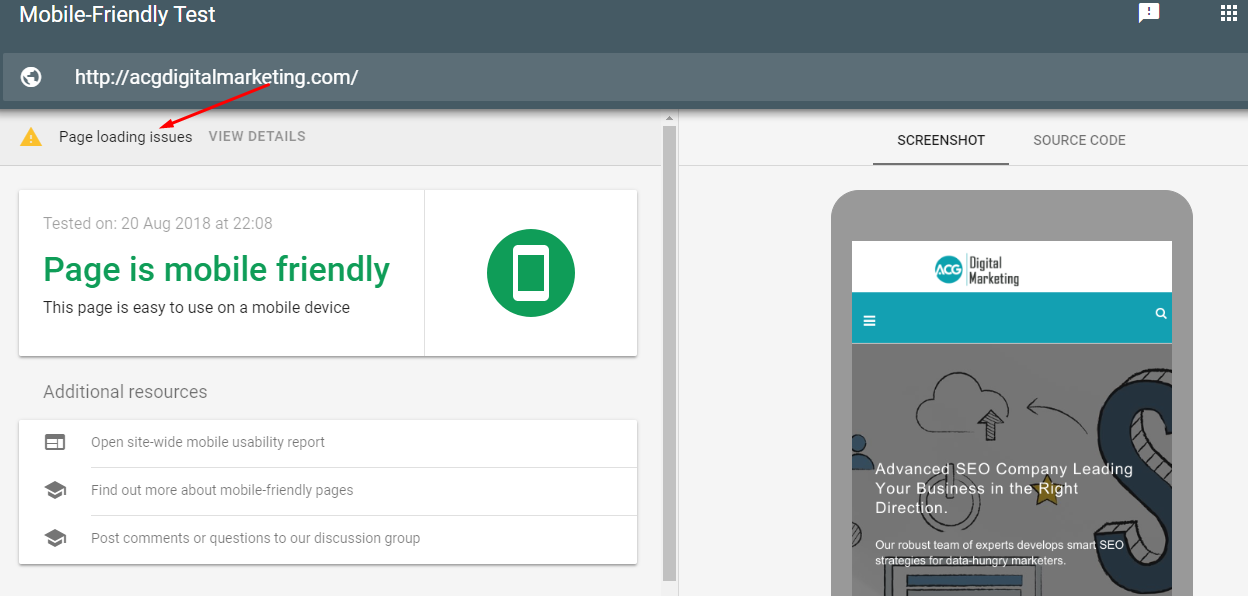

Try to avoid intrusive pop-ups on mobile devices as Google penalizes websites that use such kind of advertising. The best way to use pop-ups is integrating as lightly as possible without interrupting user experience on mobile devices.
Adding eye-catching CTA buttons can help you generate traffic and revenue.
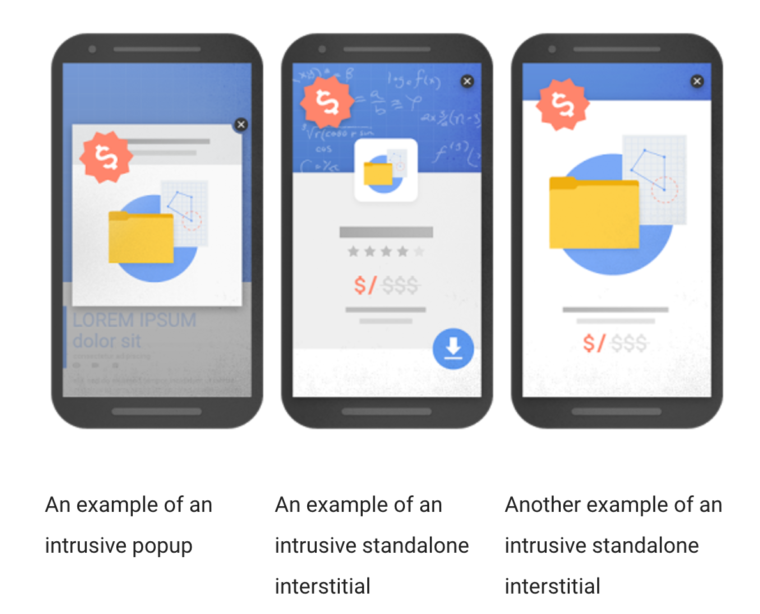

Optimizing content for mobile devices is a must. This includes compelling titles and descriptions. You can use SE Ranking keyword research tool to look for high-performing phrases that generate more mobile traffic for your site.
Google reported that search queries like “near me”, “ nearby” have grown by 34 folds. For local business, it would be key to go for this kind of query.
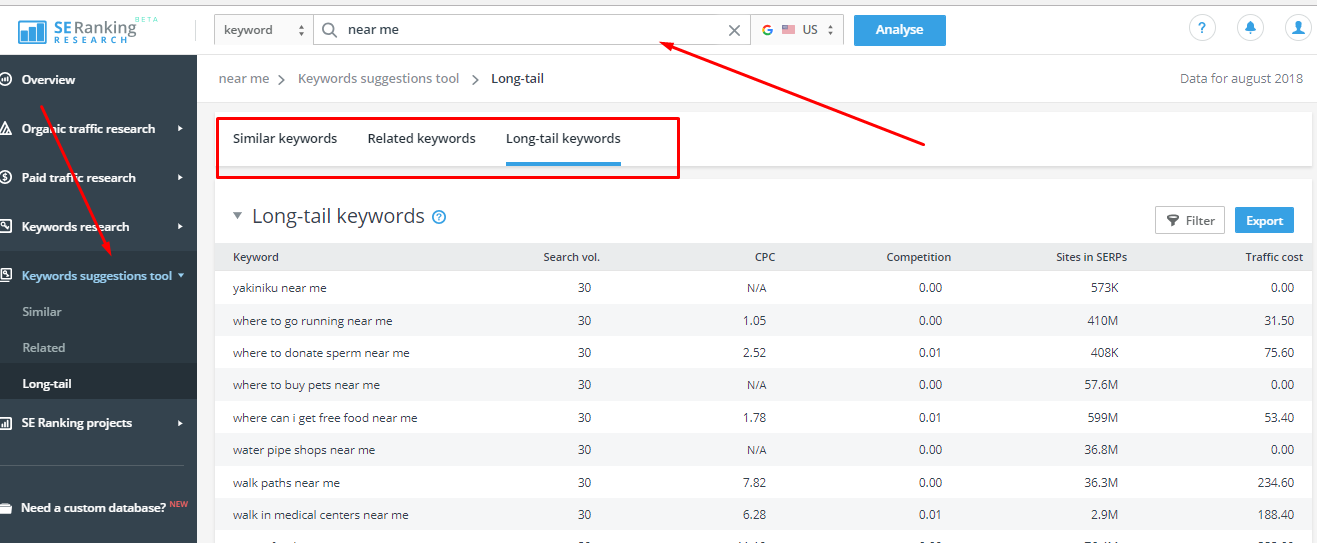

Another mobile content tip is to try to use short and simple headlines. Divide content into small paragraphs using bullet points, italics, bold, etc. Make sure you include right name, phone numbers, address and email. Use compatible images, but avoid using too many and large images.
In case you didn’t know, Google gives more preferences to Accelerated Mobile Pages as they help you improve mobile visibility, load faster on mobile devices and get high mobile rankings.
Once you’re prepared for mobile SEO, you should check mobile rankings as they can differ from desktop ones. You can use SE Ranking or other similar tools to track your rankings in mobile searchers with precise accuracy.
3. Increase website speed
Page speed is another important thing that affects mobile website rankings.
In fact, 40% of users leave websites that load more than 3 seconds. Slow-loading websites can be frustrating and lead to less traffic. To check all speed issues on your site, you can take the page speed test.
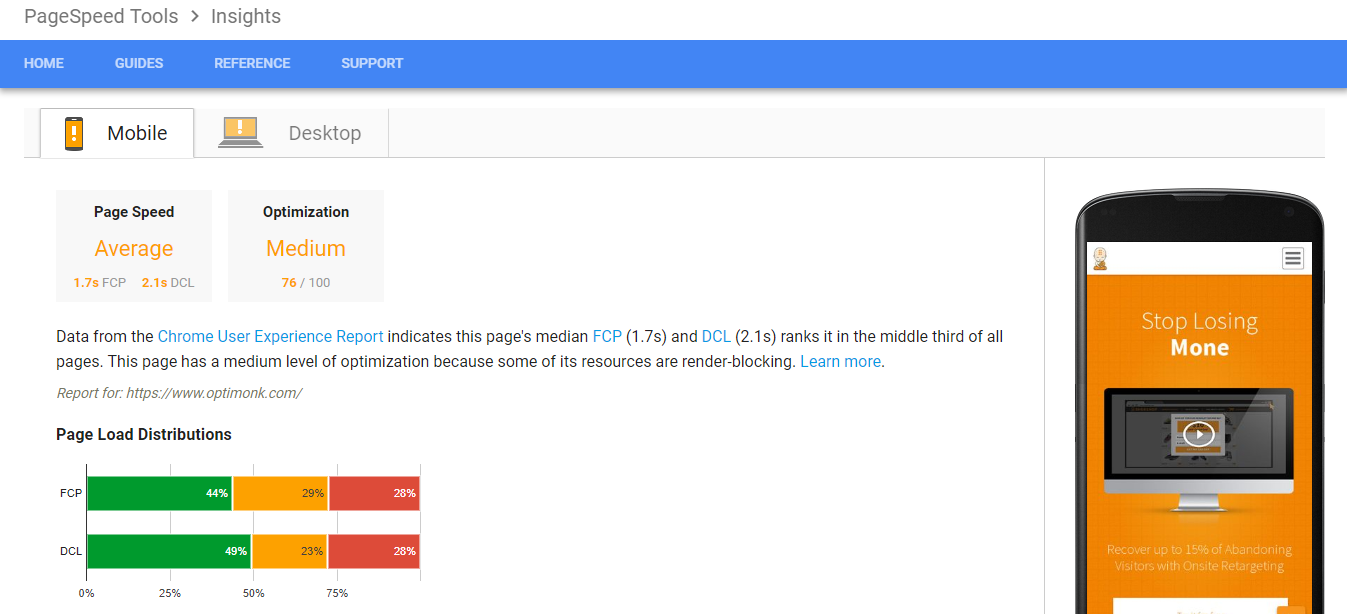

Here are some more ways to improve your mobile website performance:
- Reduce the number of different JS and CSS files
- Optimize and compress your images and videos without losing the quality.
- Use a caching plugin
- Follow Google’s rules to improve website speed on mobile devices.
- Use a mobile responsive design
- Prioritize the elements that you want to place on the website. Large file requests can slow down your website speed load
When you launch a new page or campaign on your website, be sure to test it out on a mobile device.
4. Optimize images
Choosing right images can have a huge impact on page performance, user experience and overall website attractiveness.
To improve your image usage, you can use the following tips to get you started:
- Use appropriate image formats. JPEG, GIF, PNG and SVG are common formats
- Reduce the number of large pictures and total page weight to improve mobile load time
- Include right keywords into your image file names. Use keyword research tools to find what phrases your target audience is looking for more. Adding Alt tags can add more SEO value to your mobile site
- Add images to your sitemap. Don’t forget to add information about the type of image, the subject matter, titles, captions, location, etc.
Images are just as important as the text and content on your website. So be sure to keep it in mind as you go forward to create new content.
5. Improve checkout
An inconvenient checkout process is one of the top reasons for cart abandonment.
In fact, the Baymard Institute reported that 28% of users leave websites because of long and difficult checkout. For the e-commerce business, it is crucial to increase mobile conversions by making the decreasing the amount of friction of the overall process.
Keep in mind the following key points to make it easier to pay:
- Cut down the number of checkout steps by using a progress indicator to show the remaining steps of the checkout process
- Make the mobile checkout as short as possible
- Don’t make users create an account to purchase, allow them to use a guest checkout
- Offer simple payment methods to process the purchase fast
- Design focused CTA buttons to complete the order
Here is a good example of a great mobile checkout process from Work Examiner that doesn’t require a creating account and fill in only necessary details to purchase:
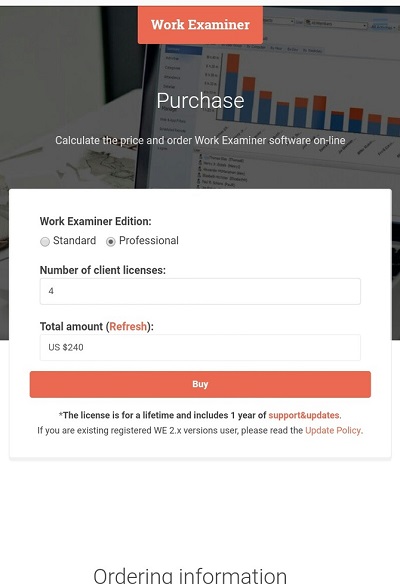

6. Nail Mobile Website Design
Google’s study revealed that it takes a few seconds to form an impression of a site.
If your mobile site is poorly-designed and unresponsive, it can lead to low conversion rates and a lack of trust and credibility. That’s why it is crucial to improve mobile site design.
You should definitely care about usability, and make sure that it is easy for people to find the information they need. You can solve it by doing the following:
- Make your marketing campaigns mobile-friendly
- Create a mobile-responsive web design
- Use entertaining surveys and quizzes with tools like Survey Anyplace
- Bannersnack offers a great range of mobile popup banners specially designed to increase mobile conversions
- Design creative mobile graphics, presentations and charts
- Ensure that the “back” button works well
- Make the navigation simple and easy to use
- Check out user flow to ensure mobile users find the necessary information that makes them take action to convert
- Offer a Tap to Call option for future clients
It is important to think mobile-first. A well-structured design can lead directly to sales and conversions.
Here is a good example from Injury Trial Lawyers, APC where they include the drop-down menu, the call-to-action button “Start your free consultation” and location map to better navigate the site.
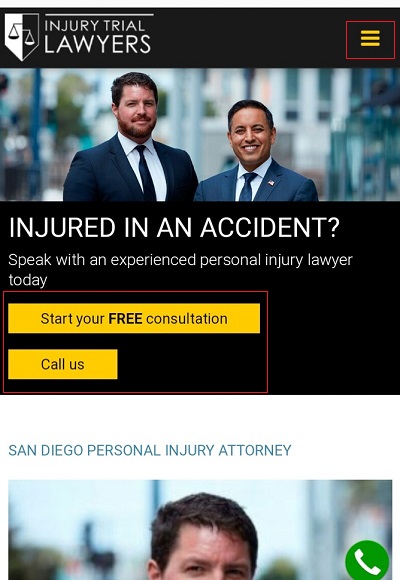

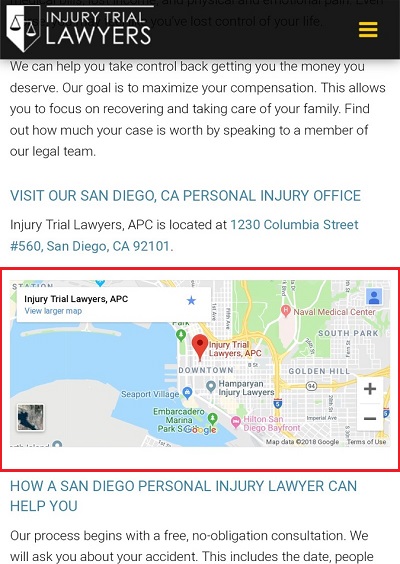

Good mobile website design isn’t all about having slick features. It essentially comes down to being responsive and easy to use.
7. Make Clear Product Category Pages
One of the most important aspects that affect customers’ purchase decisions is the ability to find a product that they want.
As the mobile version usually limits how much customers can view at once, category page faceted navigation can help you increase user engagement on websites using analytics and heatmaps. Here are some tips on how to avoid confusion and create great product category pages:
- Give the possibility to choose as many as possible facet options before users applying changes
- Try to show all facets that are included at the top of the pages and give the ability to change them right out there
- Pin facets that were applied at the top of the page as it can help users always remind and keep available for use
- Give people the option to view the number of results they see.
- Show a brief information about the product
- Breadcrumb links should easy to click and large
- Add the back button to return the category and change another category
Take a look how Fernandez & Karney is doing to create great product categories. 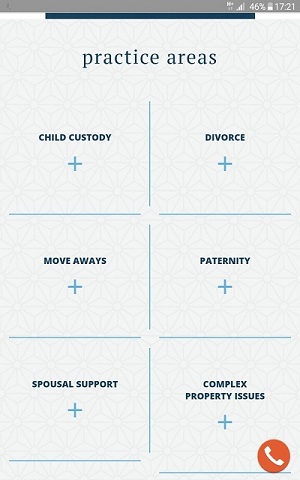

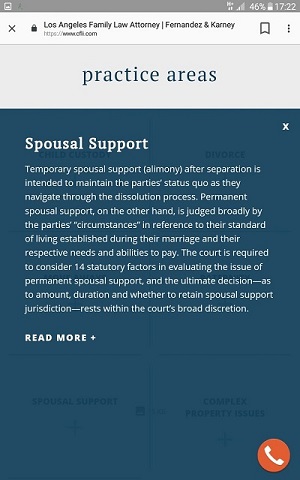

Conversions rates for users who include clear product pages are higher than for those who don’t care about the user experience. So, organizing category pages the right way will maximize the returns and increase sales.
8. Make form input simple
Filling out forms on mobile devices is more difficult than on desktops.
To ease the barriers when completing a form, it is important for online businesses to simplify the input of information on mobile. Hubspot researched 40,000 landing page forms and came to the conclusion that forms with 3 fields could increase the conversions of web pages twice.
Here are some recommendations you can use to increase conversion rates and keep forms simple on mobile devices:
- Include smart features like the autocomplete functionality, this will help users speed up the process to fill in forms
- Add and use checkboxes for many purposes like automatically copying the shipping address information
- Use collapsible menus and dropdown lists to reduce users’ time to complete the mobile forms
- Manage the keyboard based on what kind of fields is being typed in
- Integrate the HTML tabindex attribute to help visitors use the up and down arrow keys to navigate through the form
A great example of this is ACG Digital Marketing’ mobile website:
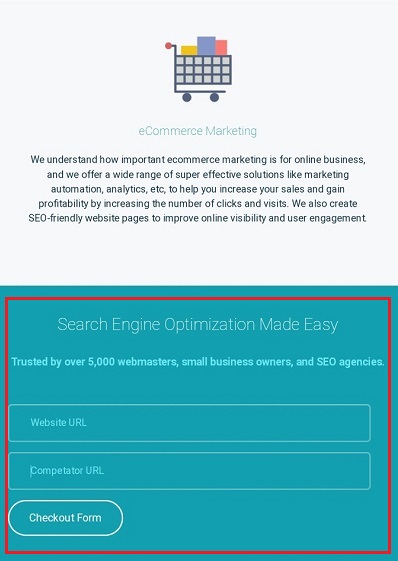

Think about things that would make you abandon your form when signing up for things, and keep in mind to make the experience as frictionless as possible.
Final thoughts
There is no golden rule of improving mobile conversion rates, but we know that creating a good user experience can lead to more conversions. Today, many e-commerce businesses are taking a good hard look at their mobile design in order to improve their sales.
What about you, have you implemented things to improve your mobile website? Let us know in the comments!









